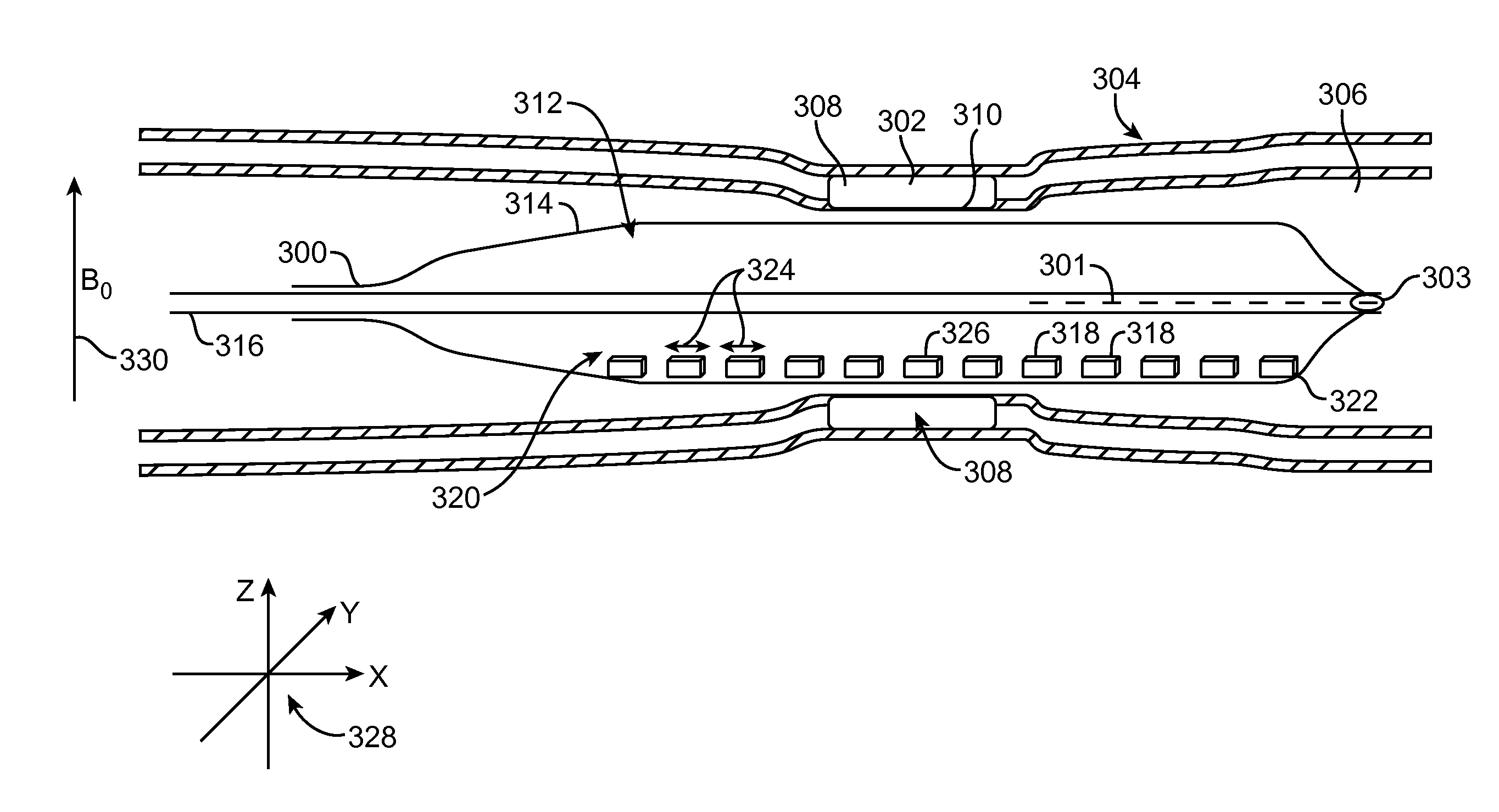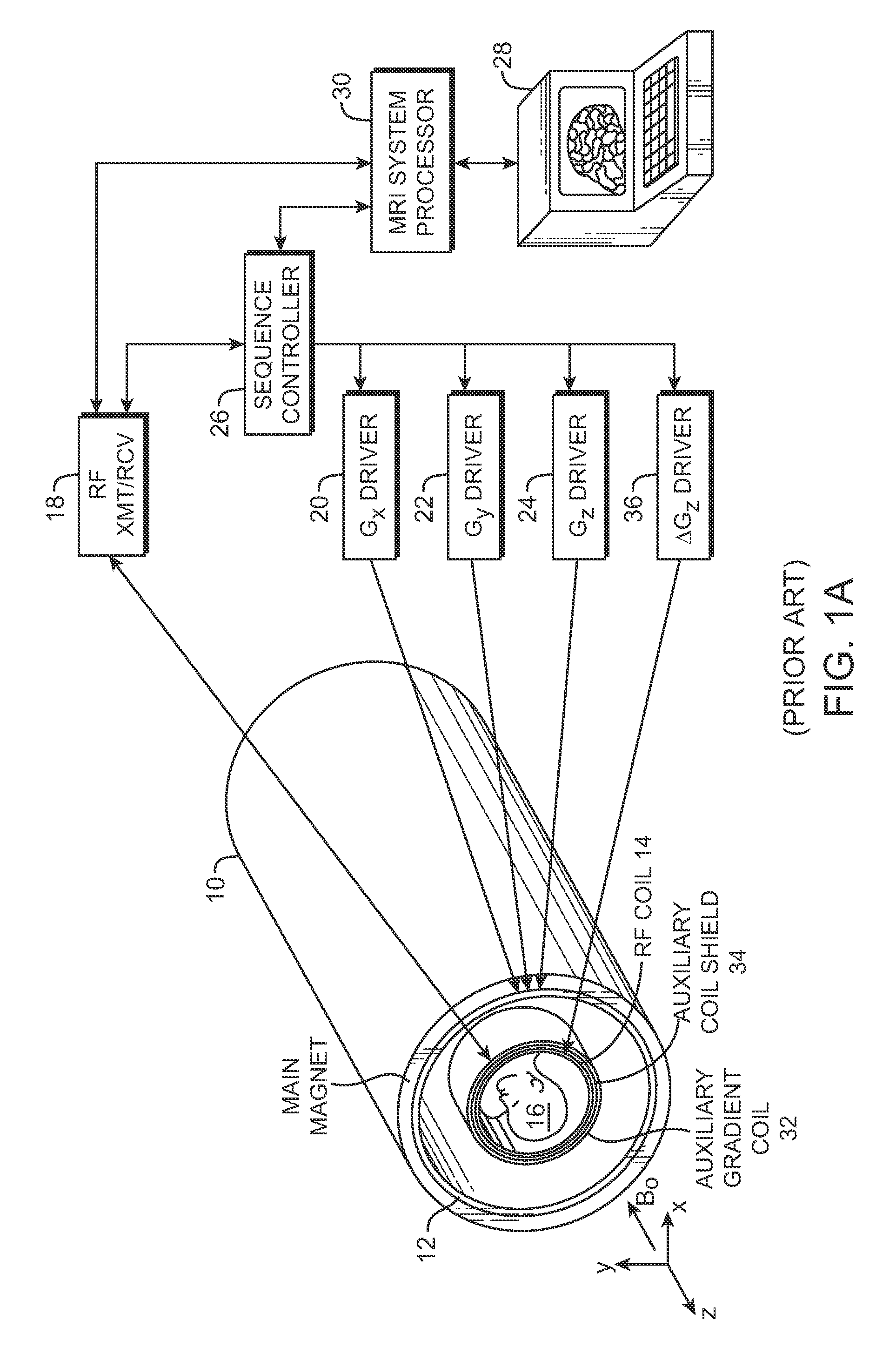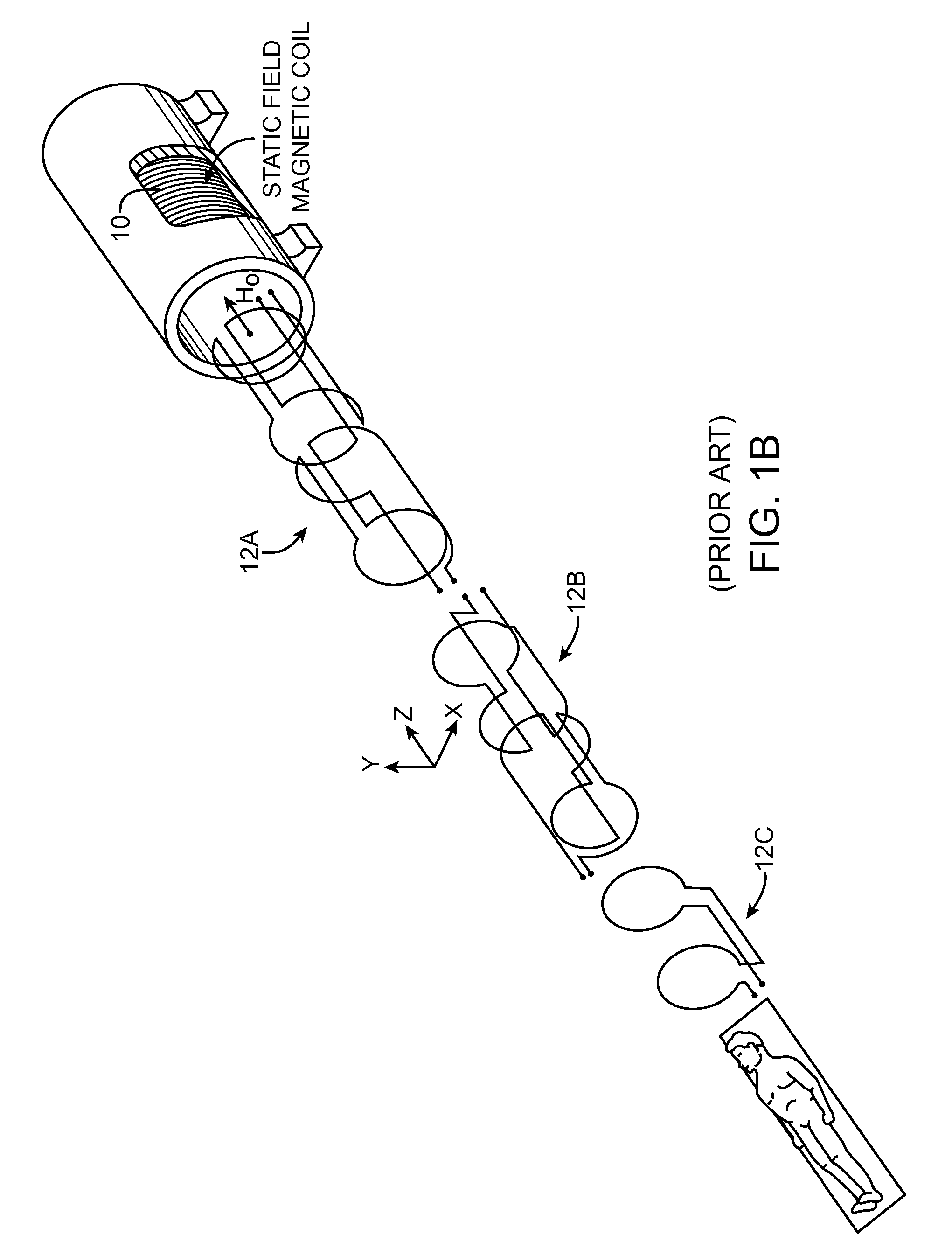Sensor array for nuclear magnetic resonance imaging systems and method
a technology of nuclear magnetic resonance imaging and sensor array, which is applied in the direction of instruments, catheters, and using reradiation, can solve the problems of morbidity and/or mortality, ineffective and/or too complex or costly implementation, and the current techniques and apparatus used to diagnose diseases are often less than ideal, so as to improve the spatial resolution of tissue. the effect of improving the resolution
- Summary
- Abstract
- Description
- Claims
- Application Information
AI Technical Summary
Benefits of technology
Problems solved by technology
Method used
Image
Examples
Embodiment Construction
[0045]Embodiments of the present invention are directed to improved MRI systems and methods. Many of these systems incorporate sensors based on the anisotropic magnetoresistive effect or giant magnetoresistive effect (AMR and GMR, respectively). These magnetoresistive effects include, but are not limited to the anisotropic magnetoresistive effect, tunneling magnetoresistive effect, colossal magnetoresistive effect, and giant magnetoresistive effect. Many of the sensor arrays described herein permit the formation of images by direct signal localization, rather than by frequency encoding. Although embodiments will be discussed below in terms of a catheter probe to be used principally in the imaging of the coronary arteries, similar configurations can be used for examining suspicious areas of the colon identified during colonoscopy, or in broncoscopy, urography, or for examination of the skin, and other applications, for example NMR testing of ground water for contamination.
[0046]In a ...
PUM
 Login to View More
Login to View More Abstract
Description
Claims
Application Information
 Login to View More
Login to View More - R&D
- Intellectual Property
- Life Sciences
- Materials
- Tech Scout
- Unparalleled Data Quality
- Higher Quality Content
- 60% Fewer Hallucinations
Browse by: Latest US Patents, China's latest patents, Technical Efficacy Thesaurus, Application Domain, Technology Topic, Popular Technical Reports.
© 2025 PatSnap. All rights reserved.Legal|Privacy policy|Modern Slavery Act Transparency Statement|Sitemap|About US| Contact US: help@patsnap.com



